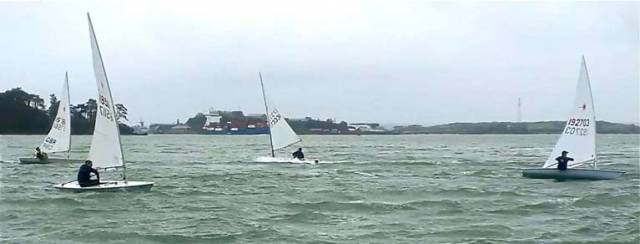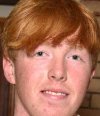Saturday, January 26th saw tough conditions on Monkstown Bay for day three of the Monkstown Laser Frostbite League sponsored by CH Marine.
The third day of the Monkstown Laser league was a story worth telling. The skies appeared at daybreak revealing black clouds scuttering at tremendous speed across Cork Harbour. Halyards were slapping against the masts and white horses were beginning to form in the bay. A windy day was in store for the competitors.
An ominous forecast showed winds gusting up to 37 knots. With the forecast in mind, the sailors arrived at the Sand Quay in time for a short briefing held at 9:30 am. Deciding the conditions were manageable, the toughened sailors enthusiastically rigged their lasers. The howling wind threatened to blow the boats over but this did not stop the sailors from launching into the wild conditions on Monkstown Bay.
"The howling wind threatened to blow the boats over but this did not stop the sailors from launching into the wild conditions"
Race Officer Alan Fehily called for a windward/leeward course situated at the entrance of Monkstown creek. The residents of Alta Terrace had a view of the sailors battling their way out to the course to be on time for the 10:15 start.
Some sailors stayed ashore having decided the conditions were too rough; this left eight sailors fighting for position on the start line for the first race. The competitors got off the line cleanly and began the first beat to the windward mark. It was a hard fought battle between MBSC sailors Ronan Kenneally, and series leader Charles Dwyer. Kenneally held his lead for the majority of the race all the while getting heavily contested by Dwyer. Kenneally crossed the finish line, securing first. Dwyer finished close behind. MBSC’s Chris Bateman finished third.
In the radial fleet, Robert McGarvey of Innascarra Sailing Club was the only radial sailor to brave the conditions. This saw him take first place, while still contesting the standard rig sailors.
The second race was no less difficult with the tide beginning to strengthen. The sailors had to pick their path carefully for the first upwind leg. The first to round the windward mark was MBSC’s William O’Brien. Fending off MBSC’s Brendan Dwyer and Chris Bateman, he held onto his lead for the first downwind leg. A tight battle on the final lap saw Ronan Kenneally slip through, to contest with O’Brien and Dwyer. The first to finish was Bateman and in second place was Kenneally. Brendan Dwyer took third position.
Sailing the radial rig, Robert McGarvey was mixing it in with the standard fleet.
The third and final race of the day was a race that the sailors will never forget. The race was started quickly and the sailors got off the line cleanly. It was a close fight between Charles Dwyer, Ronan Kenneally and Rob Howe. The wind began to increase and the leading sailors were the first to notice. All of a sudden the wind strengthened even more. Gusts of thirty knots were blowing across the water, lifting the spray off the tops of the waves. Masts were bent double, and the lasers were flying downwind with their sailors hanging on for their lives. Kenneally attempted a gybe, immediately capsizing and letting Howe through. Heavy weather specialist Charles Dwyer blasted away from the fleet, his boat throwing several feet of spray into the air. The leeward mark saw gusts of thirty-five knots hitting the Lasers. It was a race of survival, and the sailors were doing everything that could be done to stay upright. Charles Dwyer took first place, having held a comfortable lead. In second place was Rob Howe. In third place was Ronan Kenneally, having recovered his position well.
"The leeward mark saw gusts of thirty-five knots hitting the Lasers"
With a feeling of relief, the sailors went ashore. Sandwiches and hot drinks were waiting in the Bosun for the competitors where they could relax after a hard day's work.































































